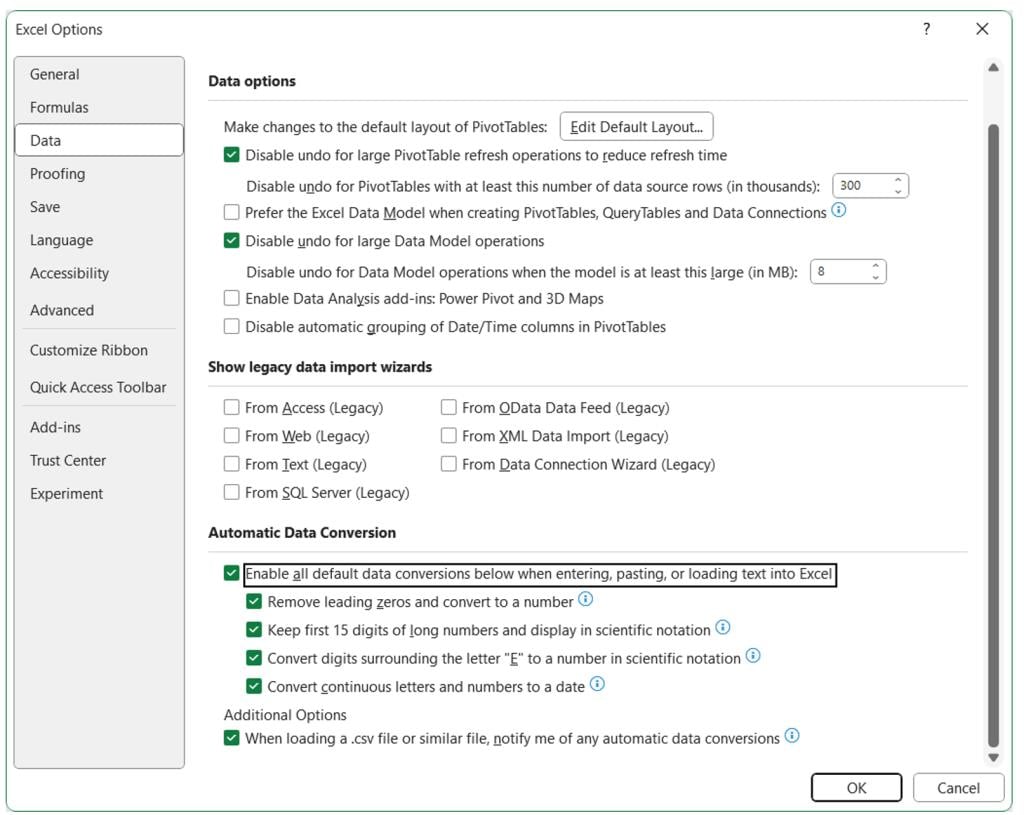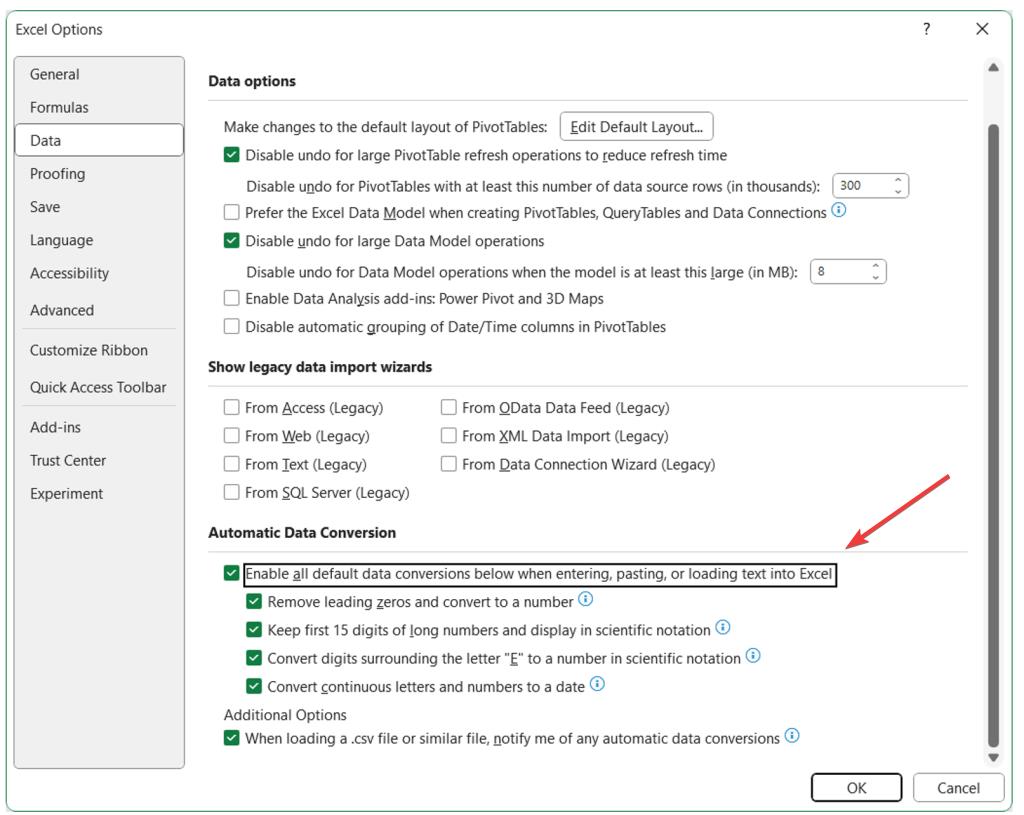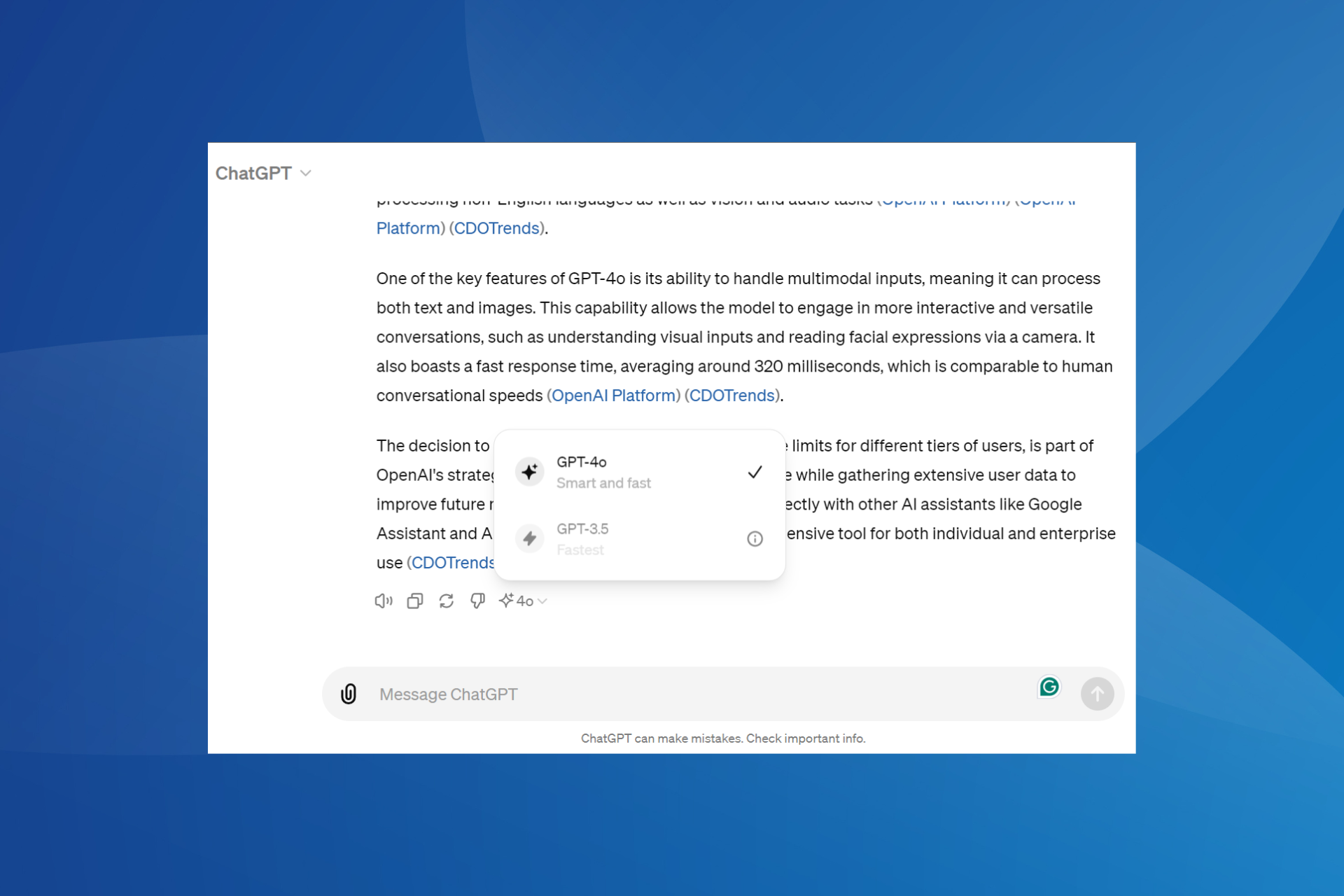How to enable & use automatic data conversion in Excel
The feature is available to Windows and Mac users.
2 min. read
Published on
Read our disclosure page to find out how can you help Windows Report sustain the editorial team Read more

Microsoft Excel is getting a new automatic data conversion feature in Windows and Mac devices, according to the latest blog in the Microsoft 365 Insider program. This comes just days after the Redmond-based tech giant announced that its Copilot AI will also debut on the platform starting in November.
Automatic data conversion was already released to Excel, but now Microsoft is making the broadly available for all Windows and Mac Excel users out there.
Plus, the company improved the general layout of the feature, making it easier to find while also supporting more formats.
But this is not all. Microsoft made it possible for users to change Excel’s default options and even disable specific types of automatic data conversions.
Here’s how to enable & use automatic data conversion in Excel
- Open your Microsoft Excel, and then select File.
- From there, go to the Options menu, and select Data.
- Here, if you scroll down, you’ll see a new section, Automatic Data Conversion.
- To enable automatic data conversion, make sure to check the Enable all default data conversions below, when entering, pasting, or loading text into Excel on.
- Enable it by clicking OK.
To use the feature, first, you should check all the additional options in the Automatic Data Conversion panel, and enable those that you see fit for your needs.
- Remove leading zeros from numerical text and convert them to a number.
- Truncate numerical data to 15 digits of precision and convert it to a number that may be displayed in scientific notation, if needed.
- Convert numerical data surrounding the letter “E” to a number displayed in scientific notation.
- Convert a continuous string of letters and numbers to a date.
After you’ve chosen your preferred options, there are many ways to use the new Automatic Data Conversion in Excel. For example, Microsoft recommends the following situation:
- Type directly into a cell.
- Copy and paste from external sources (e.g., a web page).
- Open a .csv or .txt file.
- Find and replace operations.
- Select Data > Text to Columns, and then use the Convert Text to Columns Wizard.
The feature is available to all users running Windows (Version 2309 or later) and Mac (Version 16.77 or later).










